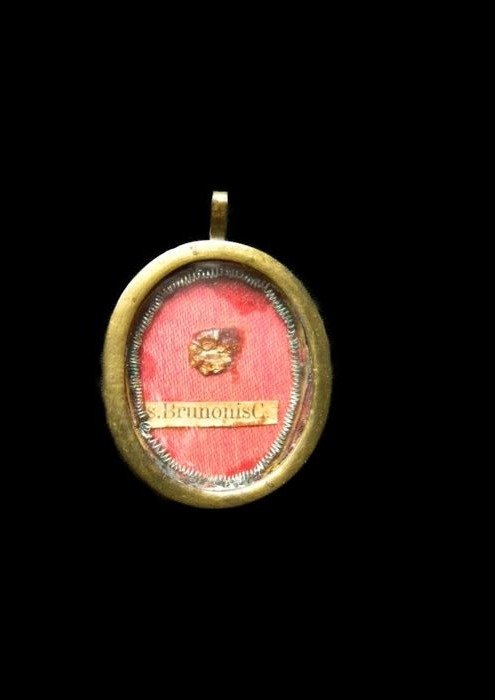
POS (διαφημιστικό αντικείμενο σημείου πώλησης) (10)
Αρ. 35351627

Αρ. 35351627

1st degree reliquary consisting of various materials such as metal, glass, textile, wax, silver thread, etc.
Condition: Good, traces of age / weathering as visible.
Bruno of Cologne (Cologne, c. 1032 - Serra San Bruno, 1101) is a German saint. He taught at the famous Cathedral School of Reims for about twenty years. Among his students was the later Pope Urban II. Bruno became bishop of Grenoble. He was appointed archbishop of Reims in 1080, but he had to make way for the king's candidate. He then retreated to the monastery of Robert of Molesme, the founder of the Cistercians. In 1084 Hugo of Grenoble gave him an inhospitable piece of land in the French Alps, ‘Grande Chartreuse’, to live as a hermit with six companions. This is where the monastery was founded that gave its name to the order of the Carthusians.
In 1090, Bruno was called to Rome as an advisor by Pope Urban II, where he lived in the ruins of the Baths of Diocletian. After that, he lived in the Carthusian monastery Santa Maria degli Angeli. Later on, he left for Squillace in Calabria, where he died in 1101.
He was never officially canonised, but his cult was allowed for Carthusian monasteries in 1514, and for the entire church in 1623. His name day is 6 October. The monasteries founded under his name are not numerous, but are widely admired for their tenacity to scripture and observance. The monks wear a white habit with a scapular that differs from most others because it is connected to a wide strip of fabric on both sides.
Bruno is a patron of the possessed and a protector against the plague.
The last photo depicting Saint Bruno only serves informative purposes.
Πώς να πραγματοποιήσετε αγορές στην Catawiki
1. Ανακαλύψτε κάτι ιδιαίτερο
2. Υποβάλετε την κορυφαία προσφορά
3. Πληρώστε με ασφάλεια